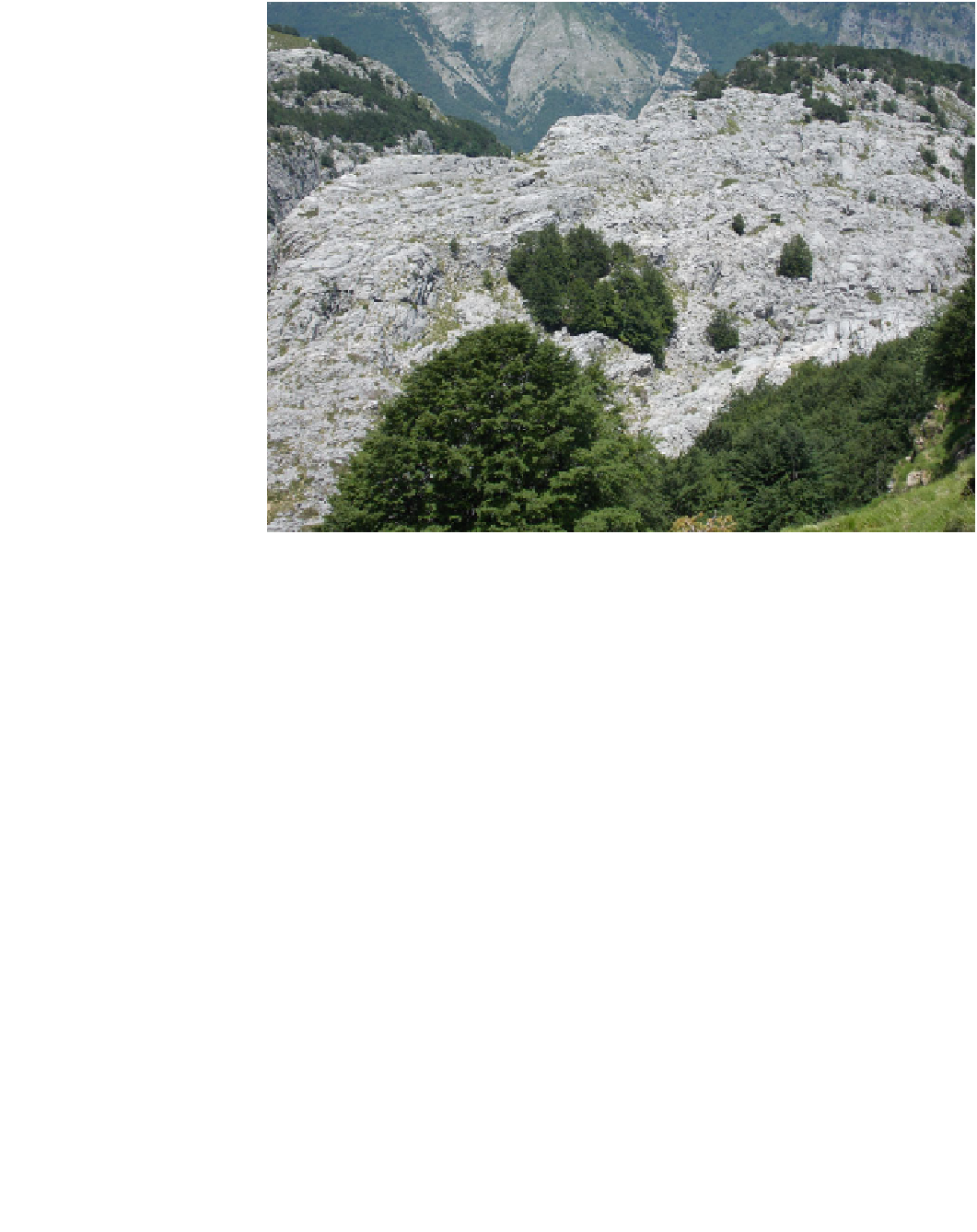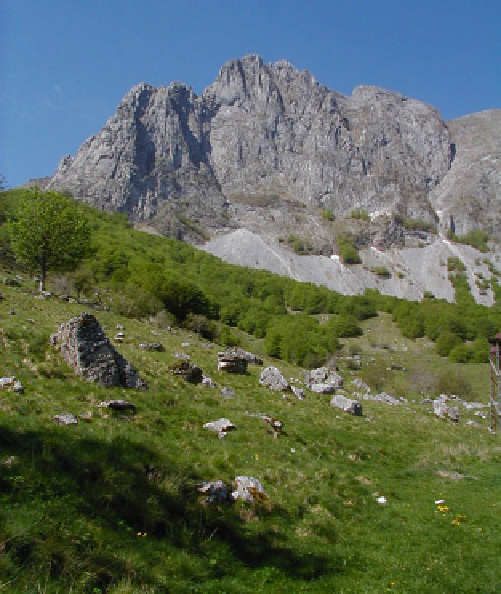Geology Reference
In-Depth Information
Fig. 6
Vetricia karren
eld in the
southeastern Apuan Alps
Geopark (Panie mountain group;
see location in Fig.
4
)
appeal of each geosite (Reynard et al.
2007
; Bruschi et al.
2011
). Therefore, the Geopark inventory described not only
geological and geomorphological sites but also identi
ed
areas in which geodiversity is so clearly demonstrated that it
is possible to create eco-friendly tourist attractions (Mt.
Corchia-Levigliani area, Equi Terme area, Serenaia Valley;
Fig.
4
).
5.1
Geosite Inventory Results
To date, the ongoing inventory process has led to a list of
253 geosites, almost all identi
ni and Isola
(
2010
), that represent all the degrees of scienti
ed by Amor
c interest,
from local to global. The geosites have been divided into 29
categories according to the main generating geological
processes. According to these categories, the geomorpho-
logical sites, including karst and glacial landforms, are pre-
valent (79 %). The other geosites represent hydrogeological,
mineralogical, palaeontological and tectonic processes.
The main outcome of the inventory is that the classi
ed
geosites are considered as
, that is to
say they are physical objects characterized by invariance.
The invariants correspond to territorial components or
landscape elements in cases where it is strategic to protect,
conserve and enhance their distinctive features. The legal
status of the term
“
structural invariants
”
Fig. 7
The Campocatino area (northern Apuan Alps Geopark) is
characterized by a glacially overdeepened basin. In the background, the
Mt. Roccandagia rocky walls from which the W
ü
rmian glacier was
originated; in the foreground, the lateral moraine ridge
“
structural invariants
”
is de
ned in the


